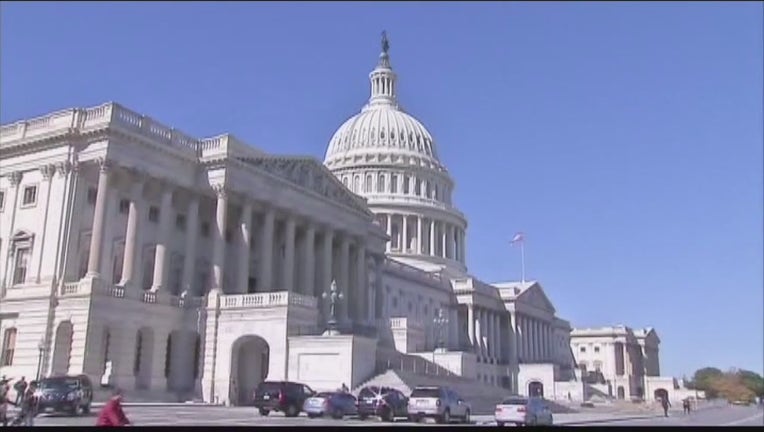Florida House eyes primary, backup congressional maps

TALLAHASSEE, Fla. - Two proposed maps that would increase Republican seats in Congress are poised for approval Friday by the state House, as Democrats question the constitutionality of the dual-map plan.
The bill (SB 102), which was positioned Thursday for a House vote, would feature a "primary" map that fits close to Gov. Ron DeSantis’ desired revamp of a North Florida district and a "backup" map --- in case courts reject the primary proposal. The backup map would be more in line with how lawmakers envisioned redrawn congressional districts before the governor got publicly involved in the once-a-decade reapportionment process.
DeSantis, at least in part, wants to dramatically alter a North Florida district that sprawls from Jacksonville to west of Tallahassee. That district, Congressional District 5, was designed in the past to help elect a minority and is held by Al Lawson, a Black Democrat.
The House’s primary proposal would squeeze the district into Duval County, while the backup proposal would keep the district similar to its current sprawling configuration. The Senate has approved a proposed map in which District 5 would remain similar to its current design.
As they weigh their options, lawmakers are anticipating legal challenges and taking into account a veto threat from DeSantis. House Redistricting Chairman Tom Leek, R-Ormond Beach, said that outside of issues related to Congressional District 5, the primary and backup maps are relatively the same and that the dual-map bill is an attempt to complete the reapportionment process before the scheduled March 11 end of the legislative session.
"The primary map is put forward as a way to address the legal theory raised by the governor while still protecting a Black minority seat in North Florida," Leek said. "If this configuration of (Congressional District 5) in the primary map is struck down by a court, the secondary map is postured to take immediate effect and contains a district configuration similar to the benchmark district. I acknowledge the primary map looks visually different. Even having two maps is a unique setup. However, we are faced with a unique situation."
Democrats, calling the backup plan "embarrassing," argued the plan shows Republican leaders aren’t confident in the primary map.
"Where's Plan C and D?" Rep. Joe Geller, D-Aventura, said. "We're supposed to pass what we believe is right."
House Speaker Chris Sprowls on Wednesday acknowledged the House approach is "unusual" but said it is "important for the situation that we're in."
DeSantis, who has threatened to veto a map that he considers unconstitutional, has remained adamant in his opposition to the current configuration of District 5, which was approved by the Florida Supreme Court in 2015.
"We're cognizant of the governor's opinion, which is why we invited his expert to come and testify," Sprowls said Wednesday. "But at the end of the day, we have said this from the very beginning, we intend to have a legally compliant map that we believe will be upheld, whether it is in a federal court, or in the Florida Supreme Court."
Robert Popper, a senior attorney for the conservative Washington, D.C.-based group Judicial Watch, appeared on behalf of DeSantis before the Congressional Redistricting Subcommittee on Feb. 18.
Ultimately, the House and Senate will have to reach final agreement on a congressional map, which then would go to DeSantis.
On Monday, Senate Reapportionment Chairman Ray Rodrigues, R-Estero, said he’s been advised by President Wilton Simpson, R-Trilby, to "wait for a final House product to evaluate prior to making a recommendation about whether to accept the House maps … or go to a conference (negotiations)."
A map needs to be in place before candidate qualifying begins in mid-June.
Florida is adding a congressional seat this year because of population growth, increasing the delegation from 27 to 28 seats.
DeSantis has pushed for new lines that would drop the number of districts that historically have elected Black candidates from four to two and push the number of Republican-held seats from the current 16 to 20, based on 2020 voting patterns.
The House’s proposed maps both would give the GOP the advantage in 18 seats, while the Senate map would expand the Republican majority to 17.
House Democrats on Thursday questioned how the Senate and House determined different numbers of minority-held districts and said they are being asked to vote on a bill that is potentially unconstitutional.
The Senate proposal offers four districts likely to elect Black members and three districts likely to protect Hispanic members, while the House maps are at three Black-performing districts and three Hispanic-performing districts.
Leek said he wasn’t part of the Senate’s map-making process, but the House, which used similar data, "reached a different conclusion."
"I believe that our Senate partners used the right process and came to their maps legitimately and that they are legally compliant maps," Leek said. "But I have 100 percent faith, because of my involvement directly with the creation of the House maps, that our process and our maps are legally compliant. And so, as a matter of preference, I prefer to use our maps."
Among the differences between the House and Senate plans are the futures of Central Florida’s Congressional District 7, held by Democrat Stephanie Murphy, and District 10, held by Democrat Val Demings. Murphy is not seeking re-election this year, while Demings is running for U.S. Senate.
The Senate would keep most of the existing lines for those districts. The House would merge most of the two districts, potentially reducing Democratic seats in the Orlando area from three to two. The change would move Murphy’s district from Democratic-leaning to Republican, while slightly increasing Black representation in District 10.
Click here for the latest Central Florida news, Florida stories and local headlines.

